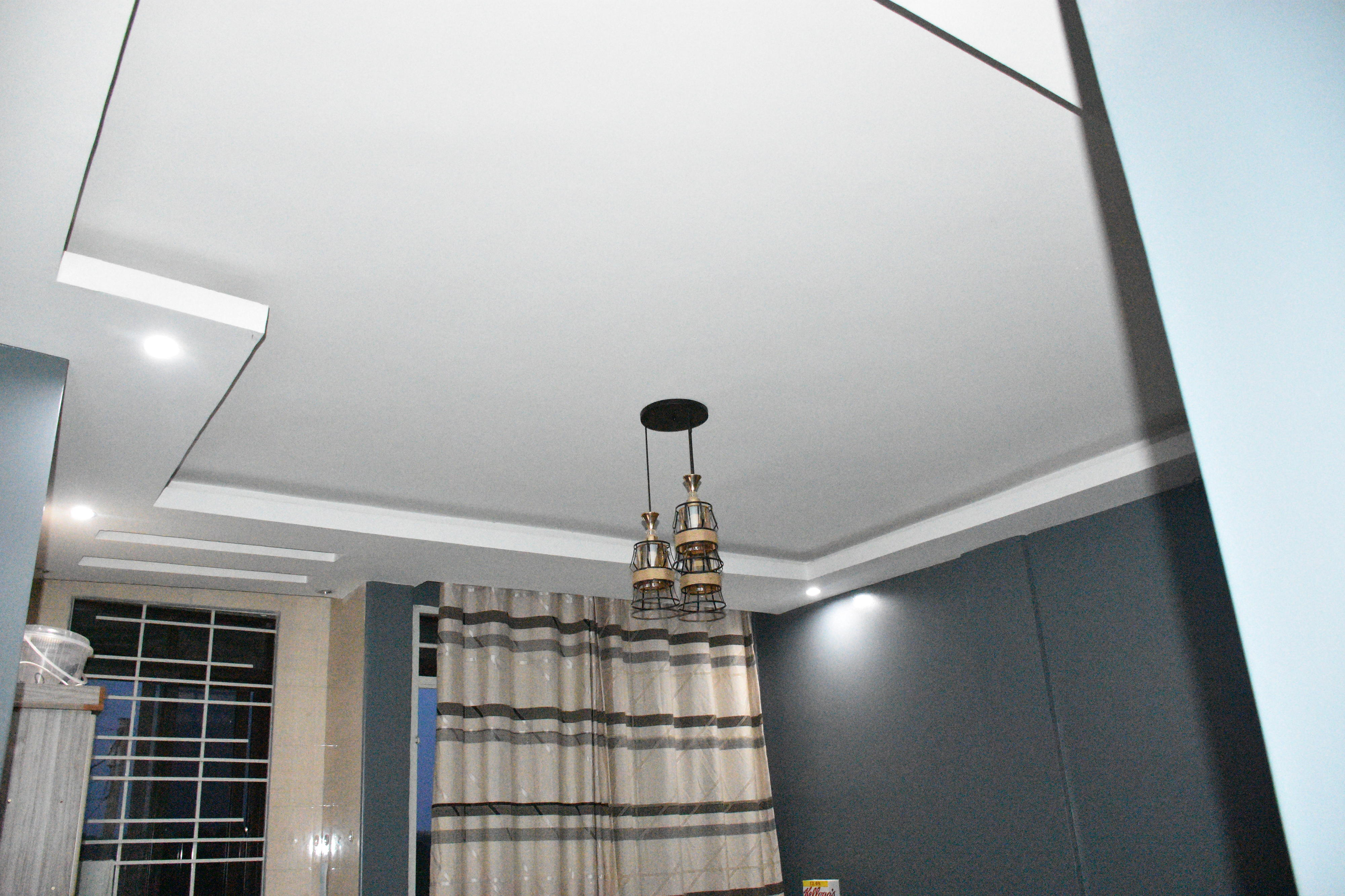Prime
The age of smart homes is here: Are we ready?

A high end apartment building in Naalya. PHOTO | TONY MUSHOBOROZI
What you need to know:
- Devices in a smart home are interconnected through the internet and can sometimes do without internet or even electricity. They make for very convenient living.
Larry Luyombya, the proprietor of Larry Group of Companies (LGC), knew he needed a smart home the day he left his keys at office and only realized it upon arriving at home. The thought of doing a one and half hour drive back to office was pure torture.
“It was late, and I could neither send anyone to bring them to me, nor go to a hotel since I had an important meeting the next morning. All resources needed for the meeting were in the house,” Luyombya says.
He had to spend another three hours moving to and from the office, to be able to access his house.
As a tech expert, he had always wanted to optimise anything as long as it was possible to computerize.
Without having to rewire everything, Luyombya turned his house into a smart home, where he could even command the lights and television to go on and off, open for his casual labourers remotely no matter where he happened to be, and so on.
A smart home
In a smart home, there is an automation system that monitors and or controls home attributes such as lighting, thermostat, entertainment systems, and other appliances. It may also include home security such as access control and alarm systems, according to Wikipedia.

A camera disguised with lights in one smart home in Bwebajja. PHOTO | COURTESY
The devices are interconnected through the internet and according to Luyombya, can sometimes do without internet or even electricity. This, he says, makes it convenient to operate in circumstances like power outages and even hard to reach areas that lack electricity.
“In the age of smart homes, the house knows you and knows what you like in different situations and moods. Basically, it becomes more than a house. It becomes more like your assistant,” he says.
When Luyombya enters his house, it already knows he likes classical music and will start playing Mozart or another of the greats. He is able to command every action in the house including drawing an opening curtains, changing the mood by different colours of lights preferred at what time, watch news, set reminders for meetings and other things and be able to open the door for someone without having to get up.
There are speakers with microphones fixed in every room to enhance his commands to the main device, meaning he can switch off the television in the living room, while he is in the bedroom.
When the voice is compromised and you are unable to speak audibly, the system is connected to one’s phone so it is easy to navigate the phone and do the commands from there.
In a smart home, fixtures like lights, entertainment appliances and high communication gadgets automatically switch off when not in use. What is even cooler, with location pairing, the house is able to tell that the owner is about to reach and will quickly switch the heaters on when it is cold, or the air conditioner when it is hot, among other things.
Security
As modern technology improves, the art of larceny also takes shape and as the saying goes; modern problems need modern solutions. Hackers can force their way into anything and smart homes are not spared.
According to Luyombya, smart home technology is cognizant of this fact, which is why several of the smart home devices can be operated remotely, even when they are offline. This makes it difficult for online hackers to compromise one’s security since the system is in manual mode and can be put back online when necessary.
“There is a device, the home assistant hardware device, the heart of the entire system which can operate without the internet. Data can be processed and stored locally. Without the internet on all the time, it will be hard for hackers to access any information in your house since they need that connectivity for long periods of time,” he says.
Since most of the appliances need internet, you can switch it on when you need it to probably check on the baby at home or any other activities taking place, and switch it off when you do not need it. The internet is also needed to receive updates for the system to adapt to your ways.
Sustainability
Some devices used can easily be powered by solar because they only need minimal electric power. And in the event that there is a power blackout, some of the devices will remain switched on, relying on their battery power. This goes hand in hand with the integrated solar, which is much cheaper and accessible and helps in the times of power outages.
The bot for switching on and off has a lithium ion battery and it can work for a year or two depending on how much one switches on and off. The battery in the bot can last through more than 15, 000 switch-ons. The battery costs about Shs8,000 on the market, which is more than affordable considering the fact that they work for so long.
The smart camera is also both electric and battery powered so if electricity goes off, it will still be switched on and controllable.
Saved by the smart home
When Luyombya was sick during Covid-19 and could not get out of bed, he commanded the house to call 911. Since they could trace his location, the police came to him and he was able to open for them from his bed, by commanding the door to open. Literally, the house saved him.
Installing smart home security devices such as surveillance cameras, automated door locks, and motion detectors can ensure maximum security to the home owner, according to Asset Property. The technology also enables one to monitor one’s home in real-time when they are away. One can activate these devices and turn on the security alerts before going to bed.
Relatability
With improvements happening around the country, Chris Baryomunsi, the minister Information Communication Technology and National guidance believes Uganda is ready for this technology.
“We have been connecting optic fiber in the country and about half the country has been covered. This will be able to ease internet connections in the country, thus supporting the smart system countrywide. With the optic fibre running in different areas, residents are able to tap the internet for easier and faster connection,” Baryomunsi says.
Affordability
Luyombya says pricing structure goes with the different packages which go from basic, premium, to gold and is priced per square metre.
One may need smart devices to just open the curtains and a few other things, the other may need their house completely smart, everything controlled by voice and other needs calling for different price ranges.
The system takes a lot to set up, and one may need to see affordability from a long term worth of energy saving to define it.
“We want to closely work with the minister’s office to see how the government can implement policies that incentivise smart homes. Because this is not just about comfort or security, but also about the environment since smart homes save energy,” Luyombya says.
For a low income earner, the LGC wants to work with the government to have policies that allow one to purchase a smart home on credit and they are able to pay in instalments, probably monthly (paying about Shs10, 000 a month).
The downsides
Most inventions will always come with cons, and so is the smart-home. However much most of the cons are already under control, they are still evident.
Because this kind of technology is still unfamiliar to many (most watch these in movies and shows. I first watched an automatic vacuum cleaner in Bob hearts Abishola!), this may bring about a steep learning curve, especially for those who are not technologically-savvy. While many are willing to adjust to new technology, others are unwilling to adjust.
An example would be asking a grandmother in the village to learn English so that she can speak to a robot.
Luyombya, however, says that with more bugs fixed and adjustments made, the bots will be able to learn the dialect of the residents, considering the fact that some of Uganda’s local languages are already on Google. At the moment, the close to local language it can operate in is Kiswahili among other foreign languages.
“If it happens to have any glitches using voice recognition, the user can easily operate the system using their phones, which is also connected. Voice here is just an added convenience,” he says.
Radiation
Wi-Fi, according to Healthline, uses electromagnetic radiation to connect electronic devices. Some people believe that Wi-Fi can contribute to the development of cancer and that it causes health risks in humans.
The system, according to LGC, operates in 2.4 up to 5 giga hertz band and the frequency is too low to get anyone exposed in an unhealthy way.
World Health Organisation has proven that Wi-Fi and Bluetooth frequencies have no harm to the human body even in close proximity.
“The levels of RF exposure from base stations and wireless networks are so low that the temperature increases are insignificant and do not affect human health,” WHO says.
Considering to take on a smart system is completely a personal choice but one will need to weigh the importance of having this comfort and what they really need (if comfort and security is out of question). There, you can know what package is right and favourable for you.
The smart system is not only used at home, but also in commercial entities like hotels and can save the property owner building a lot of money through saving energy in the long run.
With technology skyrocketing everywhere, even in Uganda, it is only a matter of time before smart homes infiltrate our live sooner than later, especially as we move towards a future that relies on clean energy.




